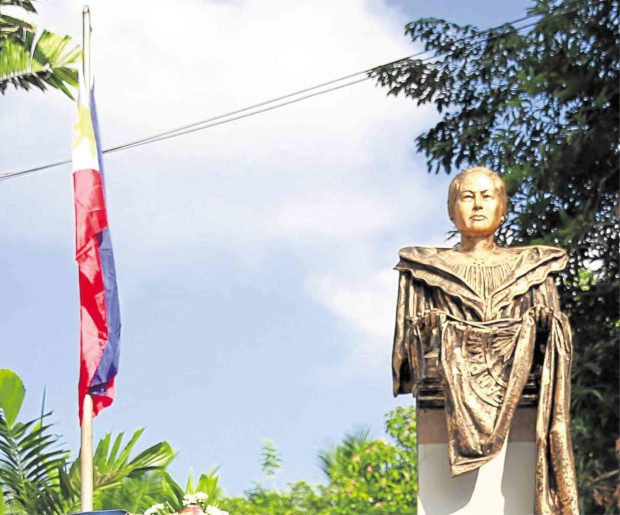
The monument built for Nicolasa Dayrit in the City of San Fernando in Pampanga province. —TONETTE T. OREJAS
CITY OF SAN FERNANDO — In the 2015 biopic “Heneral Luna,” no scenes refer to the Kapampangan women who gathered at the Bacolor convent on April 24, 1899 to convince General Antonio Luna not to violently confront General Tomas Mascardo who partied in nearby Guagua town.
The tension arose when Mascardo defied Luna’s instruction to send troops to defend the Bagbag line in Bulacan in order to protect Pampanga, Nueva Ecija and the rest of central and northern Luzon from American invasion. Luna led the Philippine Revolutionary Army.
Tiburcio Hilario, then military governor of Pampanga, needed to end the discord so he sent “a bevy of Pampanga beauties” led by Praxedes Fajardo and Nicolasa Dayrit, both leaders of the local Red Cross, to pacify the two generals.
Luna kept his cool but the Bagbag line fell to the enemy nonetheless.
Book in Kapampangan
On Sept. 10 during Dayrit’s 143rd birth anniversary, she was reintroduced to a younger city audience with the launching of “Nicolasa Dayrit-Panlilio: Ing Bayaning Fernandino,” a children’s book published by the city government and integrated in the basic education curriculum.
Teacher Nancy Tolentino wrote the story in Kapampangan. She also illustrated the book. Fernandina Otchengco, chief of the Department of Education’s school governance and operations division, penned its English translation.
The book, according to Mayor Edwin Santiago, “tells in detail the life of a great woman, her untold stories, her sacrifices and contributions to free our country.”
Hilario’s granddaughter, the late diplomat Rafaelita Hilario-Soriano, first shed light on these incredible women, in her 1991 book, “A Shaft of Light,” and her 1995 book, “Women of the Philippine Revolution.”
Ending anonymity
The San Fernando government went a step further in 2004 to end the anonymity of Dayrit, a San Fernando lass who nursed wounded and sick soldiers and who helped the revolution as a member of the La Junta Patriotica de San Fernando.
Dayrit’s remains were transferred with full honors from the Loyola Memorial Park in Parañaque City to a monument standing on San Fernando land owned by her son, the late architect Pablo Panlilio.
On her 132nd birth anniversary in 2006, the National Historical Institute unveiled a marker near the monument honoring her contributions to the fight for Philippine Independence. —Tonette Orejas